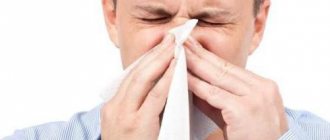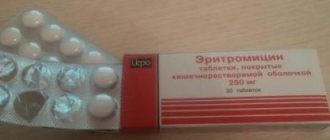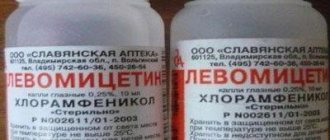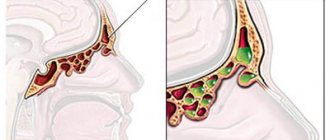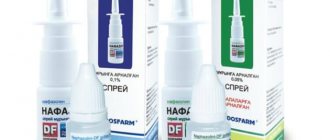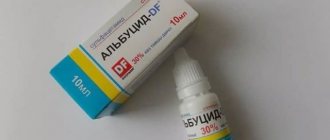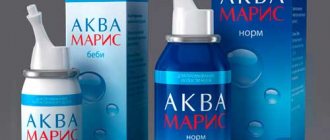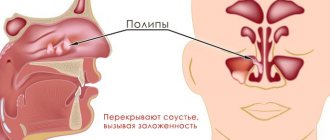Author's rating
Author of the article
Shutofedova Ksenia Yurievna
General practitioner
Articles written
578
about the author
Along with drops and tablets against the runny nose, sometimes people use ointments on their own. These remedies are not a traditional way to treat rhinitis.
What ointments for a runny nose are used for a runny nose? What kind of nasal ointments are useless for rhinitis? What nasal ointments are not recommended? Let's look into all these issues.
What works for a runny nose - ointment or drops
Practitioners rarely prescribe nasal ointments for a runny nose . Important! To treat rhinitis, the pharmaceutical industry in all countries of the world produces drops and sprays. Only this dosage form penetrates the posterior nasal passages, where viruses and bacteria multiply.
Drops, when used correctly, penetrate into the posterior sections of the nasal cavity due to their fluid properties. The spray enters deep into the nose under pressure. Both dosage forms affect the mucous membranes throughout the entire nasal passage. Drops and spray treat the mucous membrane, after which they flow along with the microbes along the back wall of the pharynx into the mouth, from where they are spat out. Remaining droplets are removed during sneezing by the ciliated epithelium of the nose.
Using ointment forms for a runny nose at home does not bring any benefit for several reasons:
- You can apply the ointment consistency with your fingers only to the external nasal passages, while the infection multiplies in the deep sections. Trying to push it into the posterior nasal passages with a stick is technically impossible. Important! The structure of the nasal cavity is such that it can only be penetrated deeply with the help of special instruments.
- Ointment preparations are created on a fat basis. Applied inside the nose, they block the function of the ciliated epithelium. Nature created eyelashes in the nose to cleanse the nose from viruses, dust and bacteria. If you smear the nasal passages with thick products, the eyelashes stick together and their flickering movement becomes impossible. This means that microorganisms and mucus are not eliminated.
Remember! The dosage form of a gel or ointment for a runny nose is the most ineffective.
Only certain ointment preparations are used for colds. For a runny nose, they are used as prescribed by the attending physician. In addition, you need to know where to apply.
Read an article on a related topic - an asterisk for a runny nose, where and how to apply it?
Gioksizon ointment - analogues
In cases where hyoxyzone ointment cannot be used for some reason, the doctor may prescribe treatment with one of the analogues:
- Pimafucort;
- Cortomycetin;
- Fucidin G;
- Oxycyclosol.
Pimafucort Cortomycetin Fucidin G
Before you start using an analogue, you should consult a specialist.
The combination of a glucocorticosteroid and an antibiotic for external pharmacotherapy is not uncommon. Therefore, there are quite a lot of analogues of Gioxyzon ointment. The most common ones are listed below.
- Oxycort. It has exactly the same composition as Gioksizon. Produced in Poland. The average cost is 150 rubles.
- Cortomycetin. Contains hydrocortisone and the antibiotic chloramphenicol. Produced in Russia. The average price is 30 rubles.
- Pimafukort. Contains hydrocortisone and two antiseptics - natamycin and neomycin. Produced in Italy. The average price is 600 rubles.
- Fucidin. In addition to hydrocortisone, it contains the antibiotic fusidic acid. Produced in Denmark. The average price is 400 rubles.
- Belogent. Contains a hormonal agent - betamethasone in combination with the antibiotic gentamicin. Produced in Croatia. The average price is 350 rubles.
You can replace the drug with Oxycort ointment containing the same active substances. Also, after consulting a doctor, it is possible to replace it with other drugs with a similar effect, for example, Akriderm Genta, Supirocin-B or Cortomycetin.
From the following video you will learn about some of the causes of problems with children's skin and how to eliminate them. The famous pediatrician Komarovsky comments.
Why drops and spray are better than ointments
Parents of infants prefer to use ointment rather than drops because it does not go down the throat. The advantage of an ointment base in the nose is limited by this property. But if a safe drug doesn't work, then what's the point of using it? It makes more sense to use the same medicine as a spray if it is produced in this form.
Let's compare the forms of the antiseptic drug Miramistin. When introducing the ointment form, the finger or stick rests on the nasal turbinate, so the medicine does not get deep, where bacteria nest. The antibacterial ointment simply doesn't get to the right place. This means there is no point in using it. But, if you use Miramistin in the form of a spray, the medicine penetrates deep into the nose. This means that the therapeutic effect will be achieved.
Important! The doctor can insert the ointment deep into the nose, but with the help of instruments.
Evamenol
Evamenol ointment contains a mixture of oil, petroleum jelly and menthol. Eucalyptus oil in its composition has an anti-inflammatory effect, which means it treats inflamed mucous membranes. Levomenthol irritates the nasal receptors, causing a feeling of coldness. Under the influence of the drug, a person suffering from rhinitis feels a pleasant smell of eucalyptus and cooling from menthol. Evamentol helps relieve nasal congestion. The vasoconstrictor effect of the product is less pronounced than that of drops. Ointment for the common cold Evamenol is used for drug-induced rhinitis. The drug has a mild effect, so it is used during pregnancy. Lubricate the inside of the nose with a thin layer 2-3 times a day for 5-7 days. Evamenol ointment is not used in children under 2 years of age. The price of a jar is approximately 35 rubles.
Features of tetracycline ointment
Tetracycline ointment is a bacteriostatic antibiotic that contains the active ingredient tetracycline hydrochloride. For children, it is suggested to use a product containing 1% tetracycline in a ratio of 10,000 mcg per 1 g of ointment.
Tetracycline is an excellent antiseptic and has pronounced antibacterial properties, quickly relieves inflammation and heals superficial skin lesions when infected.
The activity of the drug is noted against gram-positive and gram-negative bacterial infections. When using the ointment, the complex between the ribosome and RNA movement occurs. As a result, protein synthesis is suppressed.
A special feature of the drug is its effectiveness, which has been proven more than once in practical experience.
Oxolinic ointment
For ARVI, antiviral ointments are used. One of the popular remedies is 0.25% Oxolinic ointment for a runny nose. Special studies have shown that the substance oxolin contained in it has a detrimental effect on all strains of the virus, but only in vitro. Antiviral nasal ointment is prepared using Vaseline. Once on the nasal mucosa, oxolin does not act on viruses in the same way as in laboratory conditions. Because Vaseline is not able to penetrate deep into the mucous membrane, where the infection lurks. The properties of the drug promised by the manufacturer do not work in practice. For prophylaxis, nasal ointment can be used during an acute respiratory viral infection outbreak - it will prevent the virus from entering the mucous membranes, just like regular Vaseline. How is the drug used? In order not to block the work of the ciliated epithelium, only the edges of the nostrils are smeared against a runny nose 2-3 times a day. For colds, the remedy is used for no longer than a week. The drug is approved for children from one year of age. Can be used during pregnancy.
We also recommend reading the article “Instructions for using Levomekol ointment.”
Possible side effects
When using hyoxyzone ointment, some adverse reactions may occur.
In relation to the skin and subcutaneous cells, the appearance of:
- Local irritation on the skin, rashes, burning sensation, itching, prickly heat, dry skin;
- Hypertrichosis, discoloration or depigmentation of the skin;
- Contact dermatitis, eczema, delayed healing of the wound surface, hyperemia, formation of striae, steroid-induced purpura, changes in skin tone, skin maceration, acne-like lesions;
- Perioral dermatitis, accompanied or without atrophy of the skin, inhibition of epidermal growth, atrophy of subcutaneous cells;
- Inflammatory process in the hair follicles, the formation of secondary bacterial or fungal infection, the “ricochet effect”, which can cause steroid dependence;
- Telangiectasia.
In the endocrine system, the following may occur: adrenocortical suppression, hyperglycemia, glycosuria. Since hydrocortisone acetate is absorbed into the circulatory system, the development of systemic disorders may occur: Cushing's syndrome, intracranial hypertension, angioedema.
In relation to the visual organs, the following may be observed: increased intraocular pressure and the risk of developing cataracts (if the product systematically gets on the membrane of the eyeballs). The immune system may develop: an allergic reaction, a hypersensitivity reaction, including angioedema, photosensitivity.
Under the influence of oxytetracycline hydrochloride, blastomycosis and increased resistance of pathogenic microorganism strains may occur.
Star
The drug "Golden Star" is registered in the register of medicines. Available in the form of a balm, ointment and inhaler. Unregistered forms of “Zvezdochka” in Russia in the form of drops and sprays are purchased through an online store or in Vietnam. The drug contains eucalyptus, camphor, and cinnamon oils, which help against colds . For a runny nose, use a balm or ointment, but apply it to the wings of the nose 4-5 times a day. An inhaler in the form of a pencil is also used. To get the effect, take 10–15 breaths per day for 5 days. An alternative to a pencil is Vietnamese drops and Zvezdochka . Apply 3 times a day, 2 drops.
We recommend reading: Star Balm for a runny nose.
Gioksizon ointment: what is it used for?
It is recommended to use Gioksizon if you have:
- Infected wounds;
- Diaper rash and all kinds of damage to the skin, against the background of which secondary bacterial infection appears;
- Weeping eczema and neurodermatitis;
- Erysipelas inflammatory processes on the skin;
- Bedsores;
- Contact dermatitis;
- Insect bites;
- Urticaria;
- Carbuncles and boils;
- Impetigo;
- Trophic ulcers that arise during the progression of varicose veins;
- Frostbite or burns accompanied by suppuration of the damaged area.
Weeping eczema Neurodermatitis Bedsores Insect bites
Dr. MOM
This product is registered by WHO (World Health Organization). Available in the dosage form of an inhaler, lozenges, and syrup. Dr. IOM cold ointment for children is applied to the chest and back area for colds. Camphor essential oil, menthol and methyl salicylate evaporate from the skin and enter the respiratory tract. When you have a runny nose, Dr. MOM ointment constricts blood vessels, causing a slight tingling sensation, a feeling of coolness and a burning sensation in the nose. For children from 6 to 11 years old, it is better to use an inhaler designed specifically for a runny nose. Throughout the day, the child takes 1 breath every 2 hours, older children take 2 breaths at the same frequency. The therapeutic effect for colds is antiseptic, anti-inflammatory and analgesic.
Important! The product is contraindicated in children under 6 years of age.
Indications
Treatment with this product is prescribed for skin diseases that are treated with glucocorticoids if they are complicated by a bacterial infection (if the pathogen is sensitive to oxytetracycline).
The medicine is used:
- For allergic dermatitis.
- For superficial burns.
- For streptoderma or boils.
- For contact dermatitis.
- For seborrheic dermatitis.
- For eczema.
- For insect bites.
- For mild frostbite.
- For solar dermatitis.
- With exudative erythema.
Hyoxysone is not prescribed if the child is hypersensitive to hydrocortisone or another component.
In addition, the treatment is contraindicated for children with the following skin problems:
- Tumors.
- Viral lesions.
- Reactions to vaccination.
- Perioral dermatitis.
- Rosacea.
- Dermatomycoses.
- Skin tuberculosis.
Medicines that are not recommended for use when you have a runny nose
The popular doctor E. Komarovsky often reminds in his programs that antibiotic cannot be used in the nose. In hospitals, doctors inject antibacterial ointments deep into the nose using special instruments. However, before this, a smear is cultured to determine sensitivity to antibiotics. If this is not done, the medicine will not help. In addition, cross-resistance of bacteria to drugs of the same group will develop.
Let's look at medications with antibiotics that are prohibited for a runny nose:
| Syntomycin ointment is used for burns and inflammation of the skin. The instructions for use explain that it is intended for external use. The active ingredient of the drug is the antibiotic levomikol. For this reason, Synthomycin ointment is not applied to the nose. The average price of Synthomycin ointment ranges from 45 to 75 rubles. | |
| Tetracycline ointment for runny nose is not used. The manufacturer clearly indicates that anti-inflammatory ointment is used in the treatment of skin. The nose turns red when you have a runny nose. Tetracycline ointment relieves skin irritation near the nostrils, but is not used inside the nose. | |
| Hyoxysone ointment contains tetracycline and hydrocortisone. The antibacterial drug copes with severe skin inflammation. The product has numerous grateful reviews from doctors and patients with pustular rashes. It cannot be used in the nose for a runny nose due to the tetracycline content. The price of Gioksizon ranges from 32 to 50 rubles. | |
| Vishnevsky ointment has been actively used in surgery for furunculosis and purulent processes for several decades. It is used to treat open wounds and frostbite. The effect of the drug is specific - for boils, Vishnevsky ointment supports and enhances inflammation. This is necessary so that the abscess matures and resolves faster. But what happens if Vishnevsky ointment is applied to the reddened nasal mucosa during a runny nose? The inflammatory process will intensify and spread. Rhinitis will take a long course. The amount of nasal discharge will increase. | |
| Hydrocortisone ointment is a hormonal agent for external use. It belongs to the pharmacological group of corticosteroids. The drug is produced for external and intra-articular use. Ophthalmic Hydrocortisone is also produced. Important! Hormonal ointment is prescribed only by a doctor and used strictly according to the instructions. This remedy has nothing to do with a runny nose. When absorbed into the blood, the drug negatively affects all systems of the body. |
For what symptoms of nasal adenoiditis is “Tetracycline ointment” indicated: healing properties
Parents should first of all be alert to the following suspicious signs in their child:
- Sticky secretions (dark green in color) accumulate in the nasal passages. An unpleasant odor appears from the nose. Sometimes, when you blow your nose, blood streaks are observed;
- The child cannot breathe freely through his nose; harmful formations in the nose are blocking him (“something is in the way,” as if a foreign body). As a result, the child begins to snore heavily during sleep and sleeps with his mouth half open;
- .Parents notice changes in the outline of the nose: the bridge of the nose, the wings of the nostrils are thickened. With light palpation (feeling with fingers), compactions are noted in the inner nasal epidermis. Children, with such manipulation, complain of pain;
- Children strive to get rid of growths in the nose, scratch out dried crusts with their fingernails, and involuntarily introduce additional infection through wound damage to the nasal mucosa.
The identified situation must be urgently consulted with a pediatric otolaryngologist. With a thorough instrumental examination of the nasal canals, clinical tests, and microbiological marking of pathogenic scrapings, the etiology of invasion in the nasal passages will be accurately determined.
Articles on the topic Treatment of adenoids with beet juice
If the histological seeding of pathogenic microbes is confirmed as the dominant culprits of the disease, a group of antibiotics of the antimicrobial category is prescribed. And, accordingly, when indicated by the age and state of the child’s immunity, the dosage and course of taking “Tetracycline ointment” are assigned.
Tetracycline in the ointment is an effective, powerful weapon in the fight against nasal adenoidoplasia. Applying even several times to the affected surface gives a visual, fast-acting result. Exceptional pharmacokinetics, in the form of inhibition of the membrane-cellular structure of pathogenic microflora, ensures the long-term effect of the drug - “Tetracycline ointment” for the treatment of nasal adenoiditis in children.
In cases of the postoperative period, adenectomy, you simply cannot do without “Tetracycline ointment”. The medicine prevents postoperative complications:
- Suppuration of wound postoperative sites;
- Maintains the sterility of dressings (nasal turundas, tampons);
- Actively impregnates neighboring, nearby locations with antibiotic effects (“Maximum sinuses”, choanae, nasopharynx);
- Significantly speeds up the healing process.
This ointment serves as an excellent prophylactic agent and delays the exacerbation of nasal adenoiditis in children. With regular use, at the beginning of seasonal outbreaks of respiratory infections, influenza, it significantly reduces the risk of contracting colds.
But ! Attention! Parents should remember: “Tetracycline ointment” has an individual tolerance factor. To explain more clearly, the ointment is not suitable for all children. The strictest control is required when treating nasal adenoiditis!
